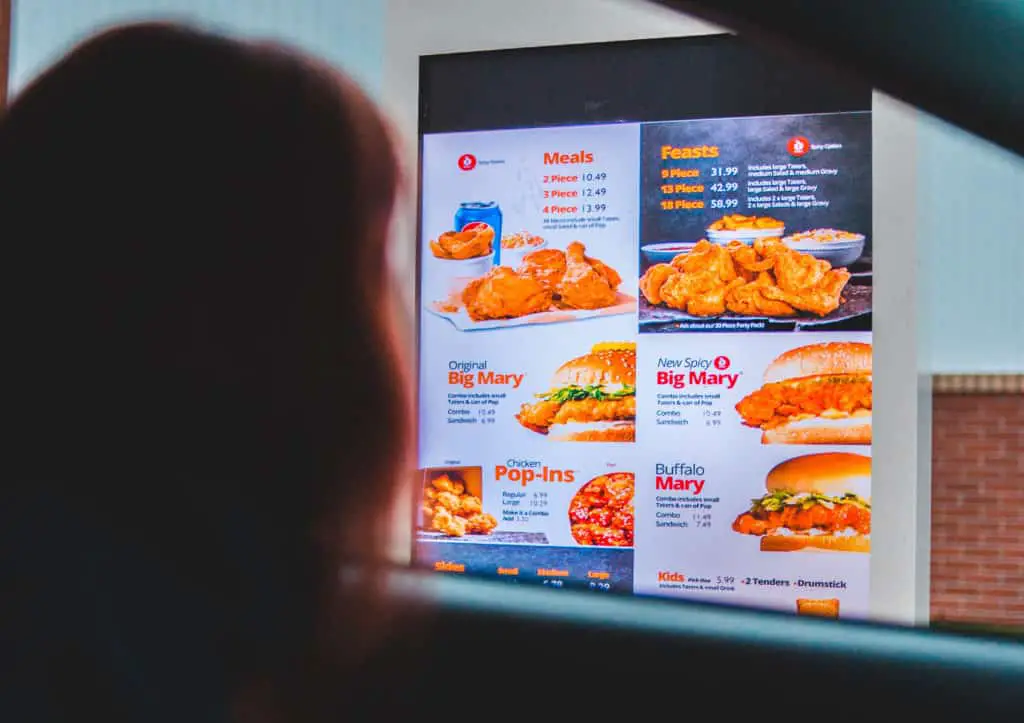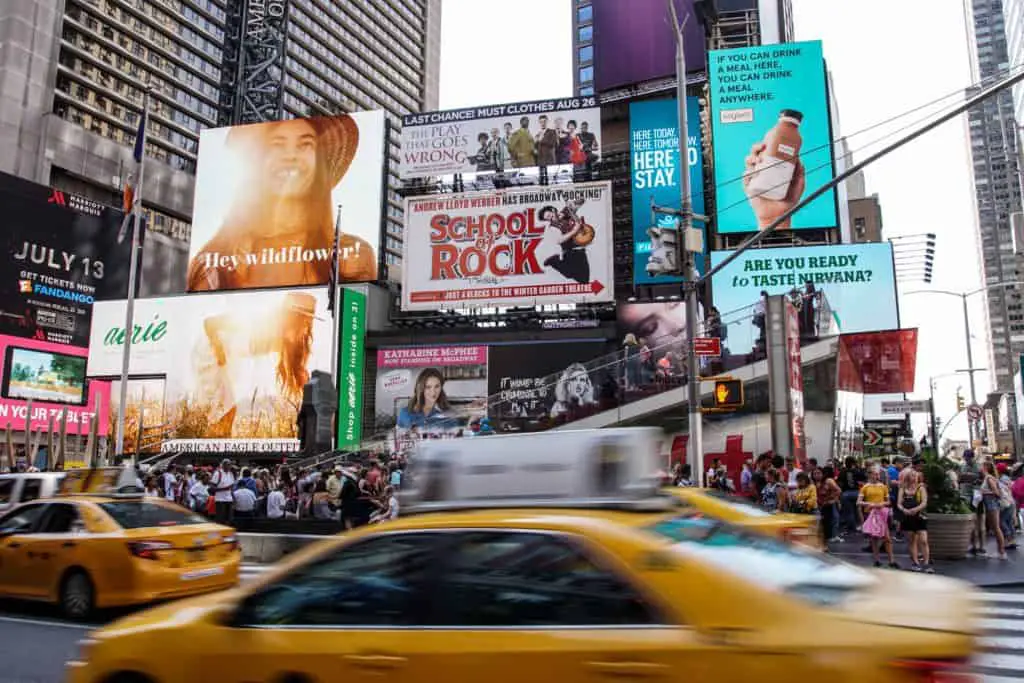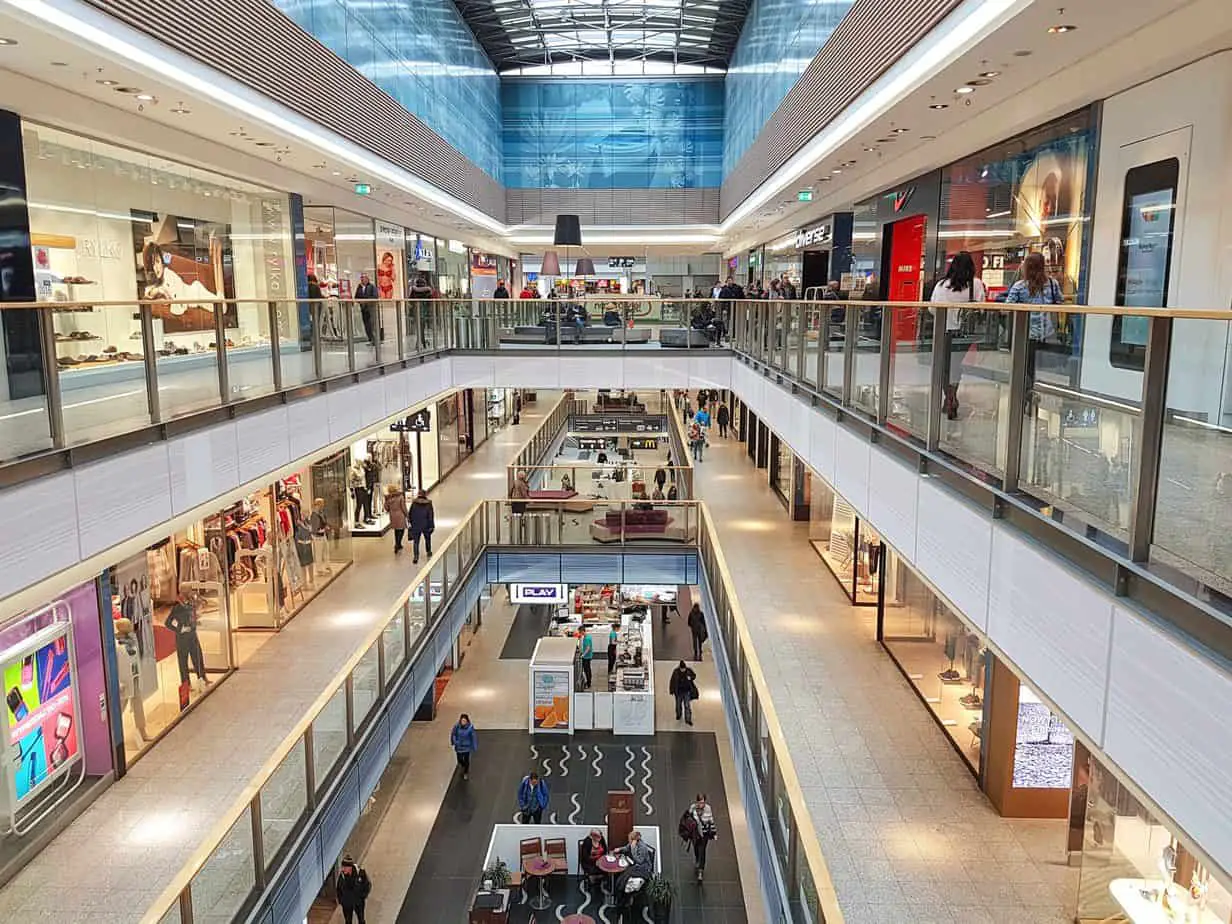This post contains affiliate links.
Digital signage is quickly on the rise in today's technologically advancing world. The idea of clearer pictures for advertising products or providing information has proven more successful than a plain, ever-stagnant print-off sign. Digital signage can also display a moving picture, multiple pictures at once, and offers customization to fit your personal preference.
Digital signage can be used for multiple reasons, both public and personal. Restaurants and retail locations are common places for digital signage. But shopping centers, college campuses, and hotels are starting to use digital signage to display information and advertise.
Digital signage is quickly becoming the norm as a means of communication and advertising. Traditional signs are being replaced with more effective versions, digital signs that can convey more than one message in the same amount of space. If you're interested in where to use digital signage, keep reading.
Where to Use Digital Signage
The advent of digital signage has allowed companies to display products more efficiently and attractively and provide information to customers in the most efficient way possible.
Digital signage is convenient for the consumer and the producer, and anyone who sees a need for it. Here are just a few benefits of digital signage, compared to traditional signage:
- Clear information
- More enticing advertising
- Interactive use
- Multiple slides on one screen
Now for the fun part- where exactly does digital signage work best? Before we dive in, here's a quick list of where you can expect to see digital signage and ideal places where you can implement it yourself:
- Restaurants
- Retail shops
- Shopping centers
- Homes
- College campuses
- Interstate billboards
- Corporate businesses
- Public areas
Restaurants are one of the many places that have begun using digital signage for much of their advertising, but even menus are getting a digital upgrade.
Whether you walk into a fast-food chain, a diner, or a coffee shop, you might see digital signage used for many instances. Digital signs in restaurants prove effective for aesthetics and convenience.
Menus

Digital signage is a great use of the display for a restaurant's menu, both inside the restaurant and for a possible drive-through.
It can be difficult to fit everything on the menu onto one sign, and frequently, plain signs can be much more difficult to read with all of the information crammed together in one small space.
Digital signage allows for a restaurant's menu to appear clear while also offering enticing features:
- Multiple screens provide more space for the menu to be displayed
- Different menu categories can be transitioned in and out on one individual screen
- Available screens that are not displaying the menu can show moving pictures of fresh produce, juicy burgers, steaming lattes, and anything else on the restaurant's menu
Promoting Products
Digital signage can also be used in a restaurant to display various items and offers available. These can be placed in different areas around the restaurant to catch the eyes of customers.
If a restaurant is trying to show off a new addition to their menu, a plain sign might not get the job done. Promotional signs can display many offers, including:
- New menu items
- Seasonal arrivals
- Meal combos
- Daily, weekly, or seasonal deals
The reason digital signage works well for restaurants is that much of the appeal of a restaurant depends upon visuals. If you have never been to a certain restaurant, you might not be too interested if pictures of their food look plain or their menus are too hard to read.
Digital signage simplifies those problems, allowing for an easy to read menu and enticing pictures of menu items that flow with the restaurant's energy.
Retail Stores
Retail stores are quickly becoming large investors in the digital signage industry. Similar to the reason restaurants have implemented digital signage, it allows retail stores to appeal to their customers more easily, both for targeting a specific audience and providing information on their store.
Increase Foot Traffic
If you are doing a little bit of window shopping, a sign that reads “20% off select items” is not as eye-catching as, say, a woman jumping around on a screen holding the wads of cash that she saved in her hands.
Digital signage is great at appealing to certain groups of people, whether clothing shoppers, video game enthusiasts, or hardware store lovers.
Sales and Promotions
Digital signage also allows retail stores to more clearly promote what they are selling. It can display what looks like a plastic, black box, only to further show that it is a high-tech multi-media player.
It can show a regular-looking shoe but then zoom in on different parts of the shoe to delve into what makes the shoe so comfortable yet durable.
Digital signage makes communication easier for both the employees and the customers. With digital signage, the customers can get an idea of what they are in before even entering the store.
Product Descriptions
At the same time, different screens showing demonstrations of different products can answer questions that customers might have, saving employees from getting caught up with too many responsibilities at once.
To recap, here are some places you might see regular signs replaced by digital ones:
| Digital Signage | Standard Signage |
| More easily promotes sales, deals, and new arrivals | Cannot provide as intricate a display as a digital sign (i.e., a still picture versus a moving picture, a blurry piece of cardboard versus a high definition screen, etc.) |
| Appeals to a certain demographic, specifying customer interests | Does not stand out and may not grab customers' attention |
| Can advertise different products on one screen, even transitioning images to more products | Restricted to one, unchangeable picture |
| Can be modified to make necessary edits, change pictures, or add new displays | Unable to be changed once it is made |
Shopping Centers
The use of digital signage in shopping centers is pretty similar to that of retail stores, except on a larger spectrum. Digital signage at the entrances and other shopping centers can provide information on types and locations of stores all around the mall.
With a clear, digital picture of maps, categories, and specific stores, digital signage makes it easier to navigate large shopping centers. It helps you find what you are looking for more quickly.
Another advantage of digital signage in shopping centers is that, aside from showing different stores, they can display certain deals and sales around the mall. Seasonal sales, the surplus of product sales, and new arrivals around the mall can be shown and offer directions to find those opportunities.
Digital signage simplifies daily, minor inconveniences that so often lead to stress and irritation. Perks of digital signage at a shopping center include:
- Easy navigation throughout the mall
- Informative displays of your current location and how to get to certain stores
- Advertisements for specific products and where to find them
- Information on sales and deals in different stores
- Categorization for particular demographics
Homes
A function of digital signage that might sometimes go unaccounted for is for personal use inside of your own home. Digital signage can enhance all different types of smart technology within a home, making it easier to control certain things and providing an interactive way to navigate and control your home:

- Thermostat: Digital signage on an at-home thermostat can greatly increase its appeal. While it can display the temperature within your home and what setting it is on, it can also provide information on the weather outside as a possible influence on necessary changes to make inside your home.
- Refrigerator: Digital signage on your refrigerator can also give very helpful information. It can show the temperature setting of your fridge – and, if you have one, your freezer – and the screen can transition to a grocery list, reminding you of what you need to get the next time you leave the house.
- TV: Digital signage can also be connected to your TV, allowing you to multitask while getting ready for work in the morning. On one half of the screen, you can watch the morning news, and on the other half, you can go over a digital display of your calendar, taking into account things you need to do that day.
Digital signage in a home can be extremely convenient for times you might be in a rush, mixing relaxation with work, and much more.
Colleges

If you attend a college or university, you have probably seen digital signage all over campus. Digital signage around a college campus provides important information regarding individual classes, university-wide updates, navigation tools, and more.
It can also act as a transitioning screen to display less-serious information, like things to know about students' upcoming events.
Digital signage is successful on college campuses because of its appeal. As for many other instances that digital signage is used in the place of traditional signage, a college student might not take notice of a plain paper sign outside of the dining hall, with a large paragraph explaining a new item added to the menu.
However, if the student comes upon the moving picture of a steaming apple pie, he or she might be a bit more inclined to make a stop at the dining hall. Digital signage provides information that has many benefits on college campuses:
- Information on university-wide events and updates, such as sporting events, lectures, and more
- Tips on current and future semester preparation
- Campus directions
- Campus safety
- University news
Digital signage is great on college campuses because a college campus is so busy. There are always multiple things going on during the week, and a unique way to advertise those events is through digital signage.
Hotels
Hotels can utilize digital signage for many purposes. People who stay at hotels are likely not locals in the area, and frequently, the distance they travel can be pretty far. As a result, there is a high chance they are not too familiar with the area they are staying in.
Digital signage in these circumstances can provide multitudes of informative displays for those staying at hotels.
- Rates: First of all, digital signage at the reception desk of a hotel can give information about available rooms and rates, letting the customer see for themselves what the situation is like.
- Tourism: Digital signage is great for showing off the beauties and features of the hotel's city. A digital screen can transition from one photo to the next, offering guests options and activities to participate in during their stay.
- Hotel information: If a guest is curious about what time breakfast is served, whether there is a pool or fitness area, or any available desktop for business use, digital signage can provide that information with pictures and tips on the hotel's features.
- Event guides: Digital signage can also aid those visiting a hotel for any event; a wedding, a convention, or any communal activity. The sign can offer directions to the venue and what specific event is taking place during a certain time.
Digital signage helps to liven up the atmosphere of a hotel lobby. Perhaps you are not fond of staying away from home, or the purpose of your trip is not how you would like to be spending your time. Technology that provides an entertaining way to view information about the hotel and its surroundings is a way to bring you in and make you feel welcome.
Interstate Billboards
Many companies invest some of their advertising money into digital signage on large billboards. When driving hours on end on a highway, you have to admit that seeing hundreds of boring billboards can get pretty old. Billboards that utilize digital signage offer a more appealing way to advertise to thousands of people a day.
Digital signage on billboards works better than a regular sign because it is more likely to catch the eye, especially if it displays a moving picture. Thus a company is more likely to attract the attention of a larger population of people.
Digital signage on billboards can also benefit the company that commissions available advertisement spots on the billboards themselves if a digital sign can transition to multiple pictures, allowing one billboard to advertise multiple signs.
Every few seconds, the billboard can switch from one advertisement to the next, allowing them to support more companies while providing drivers and passengers the opportunity to see more restaurants, stores, quotes, or whatever else might be on the billboard.
Corporate Businesses
It is not uncommon to walk into a large building, struggle to find the floor, room, or office in which you seek, and eventually end up having to ask multiple people for help.
Digital signage at the entrance of a corporate building that holds numerous businesses allows visitors to navigate their way through the building, getting to where they need to go as efficiently as possible.
Digital signage, in this instance, can also work individually inside a specific office. When you enter the office, digital signage can explain which business you have just walked into, as well as information on events, meetings, opportunities, and more.
| Digital Signage | Traditional Signage |
| Offers easy access to information about and directions to what you are looking for | Might be as disorganized as a large sign on the wall with floor numbers, room, numbers, and abbreviations of businesses and their offices |
| Provides information on specific offices and what their companies do | Does not offer the appeal that digital signage can; no interesting photos of certain offices, no information about the businesses within the offices, etc. |
Public Areas

Imagine Times Square at night, a crowd of people walking around, but no sound; no illumination except that of a few street lights. The buildings are dull; the few signs are dull; everything is dull.
Pretty depressing, right? Well, the reason you do not think of Times Square in this way is all thanks to digital signage.
The lights that fill New York with advertisements, models, broadway shows, concerts, and just about everything under the sun are digital signage forms. All the moving screens that catch the eye and their elegance encourage viewers to think about what they are seeing.
This is the same as other public places. Any large area can be better accommodated with digital signage displaying local restaurants, shops, movies, you name it.
If public areas had just a few plain, traditional signs, they would probably not catch many people's attention. All of the commotions around the area would prevent the signs from being seen often.
With digital signage in public places, advertisements become another moving part in this ever-moving world.
Why Digital Signage Is A Superior Method
As you have seen throughout the entirety of this article, the reason digital signage is more appealing, more effective, and more efficient for a company is that it grabs people's attention. It puts itself in their face, beckoning them to observe what it is showing.
A normal sign has less chance of being seen, solely because it is not particularly unique to look at. Digital signage is popular because it can show anything you want; pictures, videos, and descriptions describing a product or event are more noticeable than a stagnant sign with one large paragraph explaining something.
Final Thoughts
Digital signage is a great tool and one that should be taken advantage of. Its functions apply to numerous situations, and it is simply superior to less-lively forms of advertising.
Whether you use digital signage in the comfort of your own home or to promote your company's newest product, the results are sure to satisfy you and your customers.


